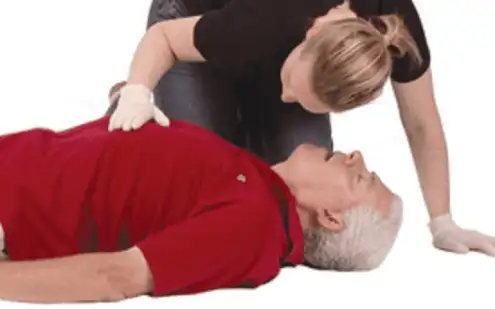Training and Assessment Delivered on Behalf of Allens Training Pty Ltd RTO 90909
When to Start CPR: A Crucial Decision in an Emergency
Emergencies don’t come with a warning. Being equipped with the knowledge to respond effectively can be the difference between life and death. One of the most critical life-saving techniques you’ll learn in first aid training is CPR (Cardiopulmonary Resuscitation). But do you know when to start cpr? This article will help you determine when is the right moment to deploy this technique on an unconscious individual.
When to Start CPR
When should you start CPR? Begin CPR when someone is not breathing. If an individual isn’t breathing, there’s a high likelihood they’ve experienced a cardiac arrest, and timely CPR can be the difference between life and death.
Checking for Responsiveness

Before diving into breathing checks, you must first determine their level of responsiveness. If they’re responsive, that’s a positive sign, and CPR isn’t necessary. But if they’re unresponsive, it’s imperative to check their breathing. Utilize the C.O.W.S method for responsiveness:
- Can you hear me? Loudly call out.
- Open your eyes. Observe if they make any attempt.
- What’s your name? This can indicate cognitive awareness.
- Squeeze my hand. This step is particularly crucial as it can indicate they can hear and are responsive, but perhaps can’t verbalize due to potential injuries.
Checking for Breathing
After establishing responsiveness, the focus shifts to their breathing pattern.
- Look for chest movements, indicative of breathing.
- Listen for any signs of breath sounds.
- Feel for breath against your cheek.

For a detailed demonstration, see the attached video on how to properly check for breathing.
It’s important to distinguish between genuine breathing and gasping. Gasping is a reflexive action and doesn’t imply the body is receiving the necessary oxygen. It can be shallow, irregular, and sound distressed, contrasting with regular rhythmic breathing. If you observe gasping without actual breathing, it’s a clarion call to start CPR.
When to start cpr? After serious bleeds have been addressed
In situations involving grave traumas, like a major bleed from a missing limb, immediate attention is paramount. Starting CPR without first addressing these immediate threats can worsen the situation. Giving chest compressions from CPR can accelerate blood loss in an already severe bleeding case. It’s vital to stabilize or control such life-threatening injuries before initiating CPR.
Empower Yourself with Comprehensive Training
This guide serves as a foundational overview, but hands-on training provides a depth of understanding unmatched by reading alone. Dive deeper into the methodology of emergency responses with our Ultimate Guide to DRSABCD. For a holistic learning experience, check out our tailored courses in Toowoomba and Wollongong. Equip yourself with life-saving knowledge today; it’s an investment in the safety of those around you.


